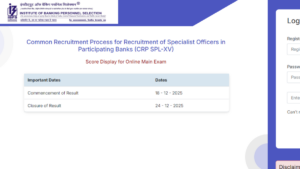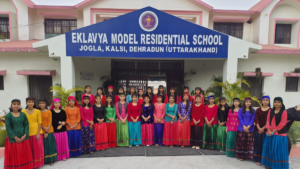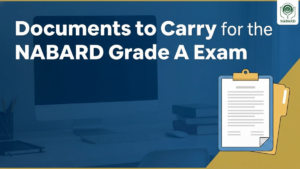Dear Aspirants,
Reasoning Ability is an onerous section. With the increasing complexity of questions, it becomes hard for one to give it the cold shoulder. The only way to make the grade in this particular section in the forthcoming banking exams like IBPS SO Prelims is to practice continuously with all your heart and soul. And, to let you practice with the best of the latest pattern questions, here is the Adda247 Reasoning Quiz based on the exact same pattern of questions that are being asked in the exams.
Directions (1 - 4): Study the following information and answer the questions given below:
‘Q + R’ means ‘Q is father of R’
‘Q ÷ R’ means ‘R is brother of Q’
‘Q × R’ means ‘Q is husband of R’
‘Q – R’ means ‘Q is sister of R’
Q1. In the expression Q + R × P – S ÷ T, how is S related to R?
Q1. In the expression Q + R × P – S ÷ T, how is S related to R?
Brother-in-law
Sister-in-law
Nephew
Brother
Can’t be determined
Q2. In the expression Q + R – S + T ÷ M, how is M related to Q?
Son
Daughter
Grandson
Can’t be determined
None of these
Q3. Which of the following expressions shows that K is sister of M?
J + K – L + N ÷ M
J × K – L ÷ N ÷ M
J + L – K ÷ M + N
Can’t be determined
None of these
Q4. Which of the following is true for the given expression?
‘J + K – L + N ÷ M’
K is aunt of N and M
K is father of M
N is sister of M
J is father of N
None of these
Q5. D is brother of K, M is sister of K, T is father of R, who is brother of M. F is mother of K. At least how many sons do T and F have?
Two
Three
Four
Data inadequate
None of these
Directions (6-10): In this question, some statements followed by some conclusions. You have to take the given statements to be true even if they seem to be at variance from the commonly facts and then decide which of the given conclusions logically follows from the given statements disregarding commonly known facts.
Q6. Statements:
Some apple are bat.
Some bat is cat.
No cat is dot.
Conclusions:
I. Atleast some apple is dot.
II. All bat being dot is a possibility.
Only conclusion I is true
Only conclusion II is true
Either conclusion I or II is true
Both conclusions I and II is are true
Neither conclusion I nor II is true
Q7. Statements:
No dot is a cat.
All cat is bat.
All bat is apple.
Conclusions:
I. All bat is cat is a possibility.
II. Some apple are not bat.
Only conclusion I is true
Only conclusion II is true
Either conclusion I or II is true
Both conclusions I and II are true
Neither conclusion I nor II is true
Q8. Statements:
Some apple are bat.
No cat is dot.
All cat is bat.
Conclusions:
I. Atleast some cat are apple.
II. No bat is a dot.
Only conclusion I is true
Only conclusion II is true
Either conclusion I or II is true
Both conclusions I and II are true
Neither conclusion I nor II is true
Q9. Statements:
Some apple are cat.
Some dot are cat.
All cat is bat.
Conclusions:
I. No cat is apple.
II. No bat is dot.
Only conclusion I is true
Only conclusion II is true
Either conclusions I or II is true
Both conclusions I and II are true
Neither conclusion I nor II is true
Q10. Statements:
Some bat are apple.
All bat is cat.
All cat is dot.
Conclusions:
I. All dot being apple is possibility.
II. Atleast some bat is cat.
Only conclusion I is true
Only conclusion II is true
Either conclusions I or II is true
Both conclusions I and II are true
Neither conclusion I nor II is true
Directions (11-15): Study the following information carefully and answer the given questions.
A, B, C, D, E, F, G and H are sitting around a circular table. Some of the them are facing the center while some others are facing outside. E sits second to the right of G. B sits third to the left of E. E and B face opposite directions. Immediate neighbors of B face the center. C sits second to the right of B. H sits on the immediate left of C. A sits second to the left of D. G faces the center. D faces the same direction as B. D is not an immediate neighbor of G. Immediate neighbors of E face opposite directions.
Q11. Four of the following five are alike in a certain way based on the given seating arrangement and so form a group. Which is the one that does not belong to that group?
H
F
C
A
D
Q12. Who sits second to the left of H?
G
B
F
Other than those given as options
B
Q13. Which of the following is true regarding F as per the given seating arrangement?
H is one of the immediate neighbors
F sits third to the right of E
F faces the center
Only two persons sit between F and G.
Only one person sits between F and A.
Q14. What is C’s position with respect to A?
Second to the left
Second to the right
Third to the right
Third to the left
Fourth to the left
Q15. How many persons in the given arrangement face outside?
Three
Two
Four
Five
One





 IBPS SO Mains Score Card 2025 Out at ibp...
IBPS SO Mains Score Card 2025 Out at ibp...
 EMRS Admit Card 2025 Out for Non-Teachin...
EMRS Admit Card 2025 Out for Non-Teachin...
 Documents to Carry for the NABARD Grade ...
Documents to Carry for the NABARD Grade ...








